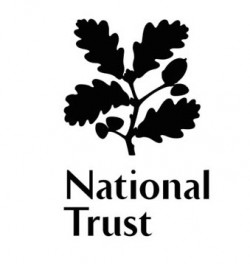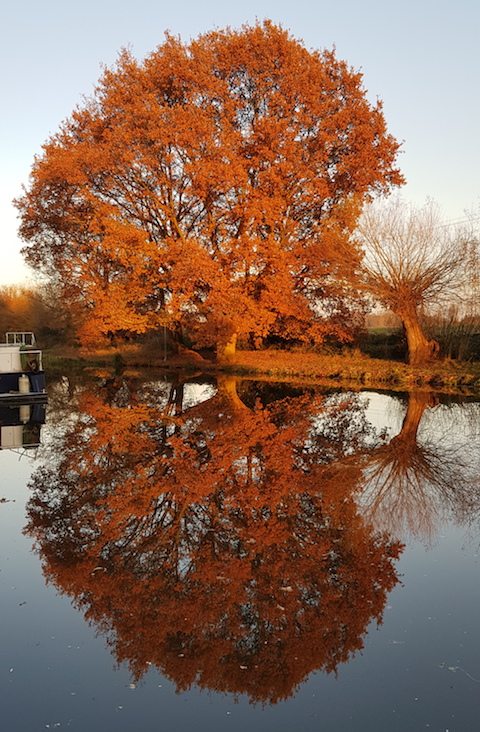 Abraham Lincoln
If given the truth, the people can be depended upon to meet any national crisis...
Abraham Lincoln
If given the truth, the people can be depended upon to meet any national crisis...
 Guildford news...
for Guildford people, brought to you by Guildford reporters - Guildford's own news service
Guildford news...
for Guildford people, brought to you by Guildford reporters - Guildford's own news service
Richard’s Wey December 2019
Published on: 16 Dec, 2019
Updated on: 16 Dec, 2019
 The latest report from Richard Cant, the Stoke lengthman on the River Wey Navigations
The latest report from Richard Cant, the Stoke lengthman on the River Wey Navigations
The amount of boat traffic on the river reduces to a trickle as we approach Christmas, with October’s half-term break seeming to be the last hurrah before boat keys are hung up until the following spring.
Our visitor centre at Dapdune Wharf has now closed for the winter and everywhere is taking on a much quieter feel.
However, this isn’t true for me as I gear up to get stuck in to my winter work programme which, with an ever-increasing to-do list, seems to make the winter appear surprisingly short and rushed.
The first major task is strimming back the bankside vegetation right along the length, which will help to discourage aggressive plant species such as nettles and brambles taking over and allow a better diversity of species to grow next summer.
It also allows us to inspect the banks and identify areas where we need to carry out repair works over the winter period.
As strimming is a noisy and dirty activity I find that it doesn’t work very well with a group so I tend to plod along with this seemingly endless task on the days I’m on my own and save the more sociable and productive tasks for my volunteers.

Even at this time of year there is still the chance to see some fantastic colour on the river, like this gorgeous oak tree lit up in the afternoon sun.
This month we’ve been as busy as ever, starting by loading a barge with aggregate for towpath surfacing, then cutting saplings from the towpath (traditionally there would never have been trees growing between the towpath and river as the boats were pulled by ropes) and clearing leaves from the lockside at Bowers.
I should also mention that I had some much appreciated help from a group of volunteers from the Seasalt shop in Guildford who came and gave me a hand litter picking, so thank you very much for your help.
Through much of the winter you will hear me talk about how I spend a lot of my time operating weirs day and night so, although strictly not on my length, I can’t not mention the bank breach at Millmead.
Those of you who have seen it will know that the pound above Millmead lock is currently a trickle of water running down the middle of the channel and, whilst work continues to restore navigation in this pound, it’s a good opportunity to get an idea of what the Wey would look like before it was made navigable back in the 17th and 18th centuries.
To put it simply the river would naturally reduce to a stream in the summer or during dry periods, so to make it navigable a series of locks and weirs were installed to hold back water and provide enough depth for boats to travel.
Along the Godalming Navigation many of these water control features already existed as they had been installed by mills to provide power.
Of course, when it rains the water needs somewhere to go so to prevent it over-topping the banks adjustable weir gates mean that we can now increase or decrease volumes to maintain the correct level for navigation.
Rest assured that everything possible is being done to restore the water levels and re-instate navigation for boats and access for people on the towpath.
Whilst all this has been happening I’ve been busy controlling my own weirs, dealt with a fallen tree, carried out maintenance on some of our machinery, assisted our maintenance team with the lock gate changing at Pyrford Lock and spent two days covering our only manned lock where the Wey meets the Thames. So a quiet month for boats but a busy one for me!
richard.cant@nationaltrust.org.uk
07786 703832
Recent Articles
- Guildford Institute’s Crowdfunding Project for Accessible Toilet in its New Community and Wellbeing Centre
- Letter: Guildford – Another Opportunity Missed?
- Letter: GBC’s Corporate Strategy – Where Is the Ambition?
- My Memories of John Mayall at a Ground-breaking Gig in Guildford Nearly Six Decades Ago
- Westborough HMO Plans ‘Losing the Heart of the Street’ Says Resident
- College Invests to Boost Surrey’s Economy and Close Digital Skills Gap
- Community Lottery Brings Big Wins for Local Charities
- GBC Housing Plan Promises ‘A Vibrant Urban Neighbourhood’ Near Town Centre
- Hospital Pillows ‘Shortage’ at the Royal Surrey
- Updated: Caravans Set Up Camp at Ash Manor School


Search in Site
Media Gallery
Dragon Interview: Local Artist Leaves Her Mark At One of England’s Most Historic Buildings
January 21, 2023 / No Comment / Read MoreDragon Interview: Lib Dem Planning Chair: ‘Current Policy Doesn’t Work for Local People’
January 19, 2023 / No Comment / Read MoreA3 Tunnel in Guildford ‘Necessary’ for New Homes, Says Guildford’s MP
January 10, 2023 / No Comment / Read More‘Madness’ for London Road Scheme to Go Ahead Against ‘Huge Opposition’, Says SCC Leader
January 6, 2023 / No Comment / Read MoreCouncillor’s Son Starts Campaign for More Consultation on North Street Plan
December 30, 2022 / No Comment / Read MoreCounty Council Climbs Down Over London Road Works – Further ‘Engagement’ Period Announced
December 14, 2022 / No Comment / Read MoreDragon Interview: GBC Reaction to the Government’s Expected Decision to Relax Housing Targets
December 7, 2022 / No Comment / Read MoreHow Can Our Town Centre Businesses Recover? Watch the Shop Front Debate
May 18, 2020 / No Comment / Read More









Recent Comments